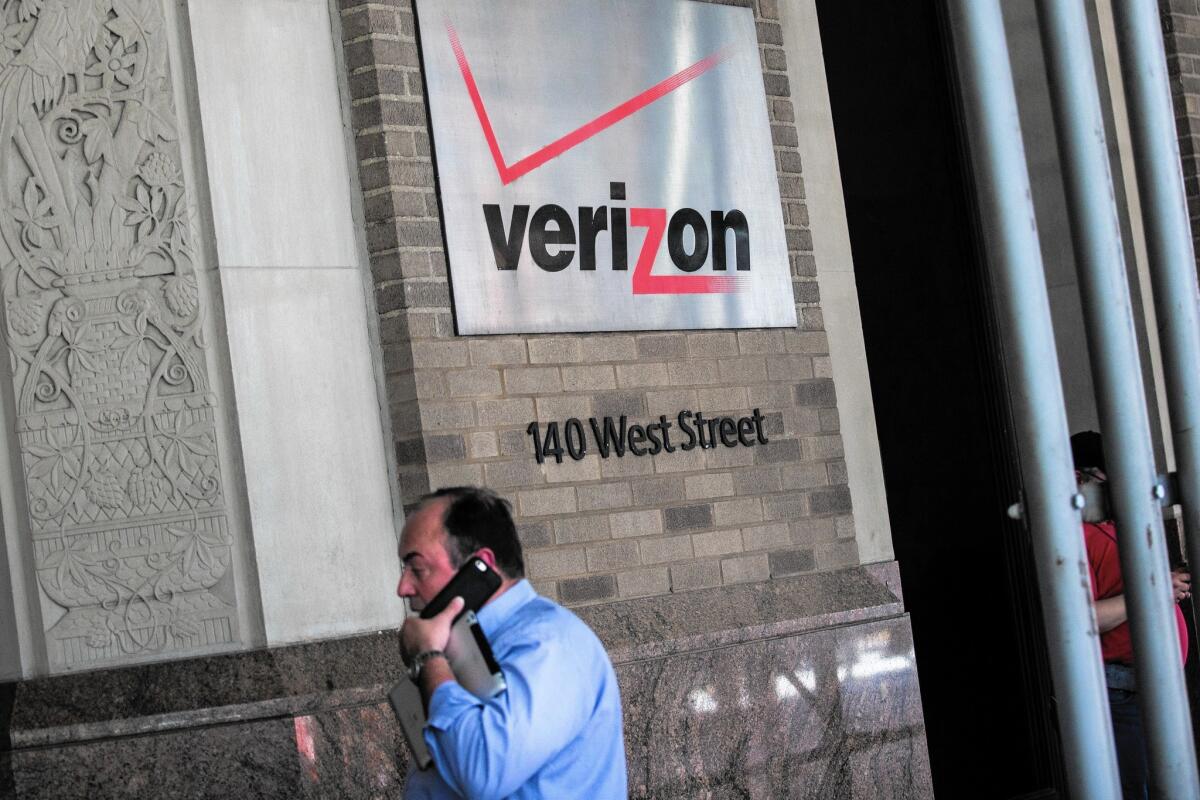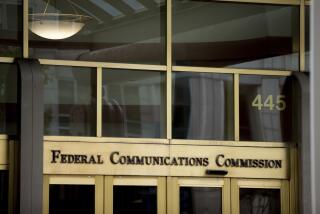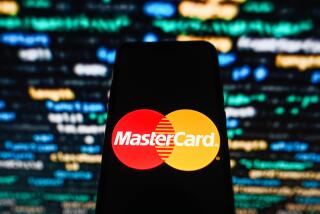Deciphering the secret language of phone bills

- Share via
Your phone bill can’t leave you scratching your head. So says Uncle Sam.
According to the Federal Communications Commission’s truth-in-billing rules, all phone bills must feature “clear, non-misleading, plain language describing services for which you are being billed.”
So how come phone customers often can’t figure out what they’re being charged for?
Covina resident Steven Barad, 68, shared a recent Verizon land-line bill with me. It was pretty straightforward, until you started kicking the tires and looking under the hood.
The $23.39 charge for “current activity” seemed clear enough. And the $3.27 charge for “taxes, governmental surcharges and fees” won’t break the bank.
But how about $11.42 being charged for “Verizon surcharges and other charges and credits”? Even though the charges are itemized on another page, they certainly aren’t explained in clear, non-misleading, plain language.
And, as Barad pointed out, the total due of $38.08 meant nearly 40% of his phone bill was for stuff other than phone calls.
“That’s just weird,” he said. “All those extra charges, whether taxes or fees, almost doubled the bill.”
Matthew Marcus, deputy director of the California Public Utilities Commission’s Office of Ratepayer Advocates, said this is a common gripe among consumers.
“You could call it a recurring theme, bills not being understandable,” he said.
The FCC has a helpful site for walking consumers through the various charges on their phone bills and where complaints can be filed. Go to FCC.gov and do a search for “understanding your phone bill.”
The Federal Trade Commission offers good info on what to do if you think someone’s slipped a sneaky charge onto your bill, a practice known as cramming. Go to FTC.gov and search for “mystery phone charges.”
And of course, all major phone companies have websites intended to explain to customers what’s on their bills. But most don’t do a very good job of it.
For example, if you look up AT&T’s “local connectivity charge,” which runs $4 in California and as little as $1.40 elsewhere, you’ll find this:
“To stay competitive, AT&T must recover increased connectivity costs associated with providing local service in your state. As a result, AT&T will include a Local Connectivity Charge in your monthly bill.”
Um, OK.
Then there’s what’s known as the “federal subscriber line charge.” On Barad’s Verizon bill, this $6.50 monthly charge was the single-biggest fee that didn’t directly involve making phone calls.
SIGN UP for the free California Inc. business newsletter >>
Verizon’s website says the charge is authorized by the FCC “to partially reimburse long-distance companies for the cost of routing long-distance calls to and from local customers.”
It’s actually a charge that goes back to the breakup of AT&T in the 1980s. It allows local phone companies to ding customers for whatever cost they face connecting to long-distance networks.
The first thing you need to know is that charge doesn’t have to be $6.50. It could be less. It could be nothing. The FCC simply says it can’t be more than $6.50. Most phone companies charge the maximum allowable.
The second thing you need to know is that today’s telecom world is vastly different from the 1980s. Nowadays, your local phone provider and your long-distance provider are likely one and the same, thus making a connection charge moot.
Regulations, you’d think, would reflect this new reality. They don’t. As far as many of our telecom rules are concerned, we’re still living in a world where a wide variety of local and long-distance companies are competing for our business.
Moreover, you can be billed for accessing a long-distance network even if you never use one. Barad, for example, uses prepaid phone cards, which allow him to make long-distance calls for a fraction of what Verizon might charge.
The service behind those prepaid cards, Simi Valley’s Minute Value, inexpensively routes calls through the Internet instead of phone lines.
Thus, Barad makes a local call to connect to the service, and his friends and family members on the East Coast receive the call via their local phone networks. No long-distance network is involved.
Les Kumagai, a Verizon spokesman, said that “doesn’t change things.” The subscriber line charge, he said, is for “the cost of that local phone network.”
Christine Mailloux, staff attorney with the Utility Reform Network, said the onus is on consumers to closely examine their bills and question any charges they don’t understand.
“It’s unfortunate,” she said, “but the carriers know they can get away with putting a lot of extra charges into bills.”
A good rule of thumb, Mailloux said, is that things listed as government taxes and surcharges are there because they’re required by local, state or federal officials.
This would cover the 3% federal excise tax, the state local utility user’s tax and the 911 state tax, among others.
Charges listed as company surcharges and “other charges,” Mailloux said, typically are on customer’s bills at the carrier’s discretion. Generally, they’re passing along their costs of doing business.
So this is where you’ll encounter the federal universal service fee and the “carrier cost recovery charge,” which is a grab bag of incidental expenses that phone companies routinely foist on customers.
“It’s not because they have to charge them,” Mailloux said. “It’s because they can.”
Here’s a tip: When shopping around for phone service, ask sales people for the base rate, without any taxes or surcharges. That’ll at least give you something like an apples-to-apples comparison.
Don’t bother asking for a rundown of all taxes and fees you’ll have to pay. I tried that with AT&T and Verizon. Reps for both companies said you can’t find out until you sign up for service.
David Lazarus’ column runs Tuesdays and Fridays. he also can be seen daily on KTLA-TV Channel 5 and followed on Twitter @Davidlaz. Send your tips or feedback to [email protected].
More to Read
Inside the business of entertainment
The Wide Shot brings you news, analysis and insights on everything from streaming wars to production — and what it all means for the future.
You may occasionally receive promotional content from the Los Angeles Times.











